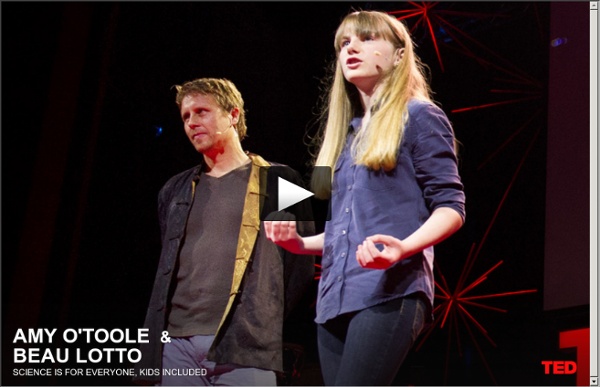



Share Book Recommendations With Your Friends, Join Book Clubs, Answer Trivia S.T.E.M. education inspiring girls nationwide Host Melissa Harris-Perry was joined by an all-female panel on Saturday to discuss S.T.E.M. (science, technology, engineering, and mathematics) and its relationship to girls in our country. They addressed how important each of the S.T.E.M. fields are in promoting self-esteem and nourishing potential, as well as in eliminating negative stereotypes for women. “Young people, particularly our girls, need to understand that doctors and scientists are something that anyone can become, no matter how much money your family has, no matter where you come from, or whether you are a man or a woman–and that message is more important than ever in today’s world.” Seven-year-old Zora Ball, also known as the youngest person to create a mobile application video game, embodies what the first lady envisioned. Similar to Ball is another S.T.E.M. inspiration–an animated one. Impressed and also inspired by the Disney Junior show is Dr. With disheartening results like these, Dr. [workbenchVideo:50754505 ]
Monty Hall problem In search of a new car, the player picks a door, say 1. The game host then opens one of the other doors, say 3, to reveal a goat and offers to let the player pick door 2 instead of door 1. Suppose you're on a game show, and you're given the choice of three doors: Behind one door is a car; behind the others, goats. You pick a door, say No. 1, and the host, who knows what's behind the doors, opens another door, say No. 3, which has a goat. He then says to you, "Do you want to pick door No. 2?" Vos Savant's response was that the contestant should switch to the other door (vos Savant 1990a). Many readers of vos Savant's column refused to believe switching is beneficial despite her explanation. The problem is a paradox of the veridical type, because the correct result (you should switch doors) is so counterintuitive it can seem absurd, but is nevertheless demonstrably true. The paradox[edit] Standard assumptions[edit] The behavior of the host is key to the 2/3 solution. Simple solutions[edit]
NAEP Reveals Shallow Grasp of Science Published Online: June 19, 2012 Updated: August 27, 2012 Elementary, middle, and high school students failed to demonstrate a deep understanding of science concepts when they performed activity-based science tasks and investigations, concludes a study released today from the first national assessment of both hands-on and interactive computer-based science activities. The hands-on tasks, which required students to use materials and laboratory equipment to perform science experiments, and the new, interactive computer tasks, which simulated an environmental or laboratory setting and asked students to solve scientific problems, were administered as part of the 2009 National Assessment of Educational Progress in science for 4th, 8th, and 12th graders. The report follows on the heels of the 2011 traditional pencil-and-paper science NAEP results released last month. In 2014, a technology and engineering-literacy NAEP is also expected to be administered. According to Mr. Ms. Web Only Back to Top
Adapting to the New Sci stds Third graders Pauline Helger, left, and Hayley Morrow observe the underside of a crayfish in their classroom at Ranger Elementary School in Tiverton, R.I. —Gretchen Ertl for Education Week May 21, 2013 | Includes updates and/or revisions. Well before the Next Generation Science Standards became final last month, teachers in pockets around the country were already exploring the vision for science education espoused by the document and bringing elements of that approach to the classroom. • A South Dakota teacher scrapped one of her traditional activities on earthquakes and volcanoes and started anew, turning her students into investigating scientists. • A Kentucky teacher revamped a lesson on friction, and had students make evidence-based arguments about whether it was their friend or foe. • An Ohio teacher's biology students analyzed the DNA of foods, including hot dogs and chicken nuggets. "It's going to provide much richer instruction," Ms. With what she's learned, Ms. Mary C. Ms. Denise M.
Students Learn by Arguing in Science Labs Published Online: October 8, 2013 Published in Print: October 9, 2013, as Students Learn by Arguing in New-Style Science Labs Includes correction(s): November 1, 2013 Studies suggest deeper learning may result Washington Teaching students to argue, question, and communicate more like real scientists may also help them understand scientific concepts more deeply, according to several ongoing research projects highlighted at the Society for Research in Educational Effectiveness conference held here last month. Scientific argument and inquiry skills—as separate from basic science-concept knowledge—are gaining a higher profile in science classes, as schools work to align their instruction with common content standards. "Although some think of these as general cognitive competencies, it turns out that reasoning and argumentation have to be disciplinary-based," Mr. Eight-Step Process The students collect and analyze their data and develop arguments to present to the rest of the class. Back to Top
Science Labs: Beyond Isolationsism Published Online: January 9, 2007 Published in Print: January 10, 2007, as Science Labs: Beyond Isolationism Boston Picture a jeweler at work. Maybe the jeweler can tell by the stone’s weight, one student suggests. But let’s assume that stone and another are of equal weight and size, the teacher responds. Matthew Anthes-Washburn uses everyday items for lab experiments in his classes. —Photo by Michael Dwyer “A diamond gives off a rainbow when cut glass doesn’t,” a youth says. This recognition, even if it comes gradually, is what 9th grade physics teacher Matthew Anthes-Washburn is looking for. Today’s lesson is on refraction, the way light bends as it passes from one material to another. After that introduction, the teacher at West Roxbury Education Complex in Boston has students break into small groups and use a simple set of tools—clear acrylic blocks, glass rods, and miniature laser pointers—to trace the path of light beams with graphing paper. Every school day, teachers like Mr. Mr.